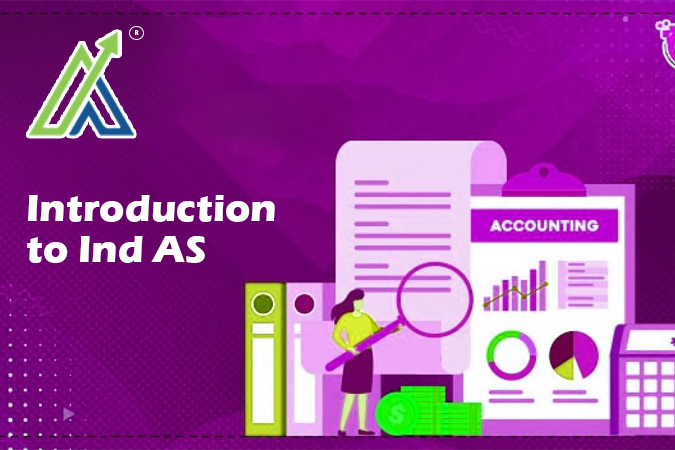They are a set of accounting standards harmonized with the International Financial Reporting Standards (IFRS) by the Ministry of Corporate Affairs (MCA), known as the Indian Accounting Standards (Ind AS). The aim of the standards is to make the financial statements transparent, comparable, and reliable, thus aligning Indian corporate financial reporting with global standards.
Need for Ind AS
Hitting corporate operations ceilings requires accounting standards harmonization across nations. Therefore, Indian firms involved in cross-border transactions and those with foreign direct investments require financial statements that are comprehensible and comparable from a global standpoint. Ind AS plays a significant role in harmonizing the differences between Indian consideration principles and international frameworks.
Key reasons for adopting Ind AS include:
- Global Compatibility: Adhering to IFRS facilitates smoother international transactions and investments.
- Transparency: The clarity and disclosures of financial statements have improved.
- Attracting Foreign Investment: By reducing the likelihood of financial reporting discrepancies, globally recognized standards serve to attract an increased number of foreign investors.
Transition from Indian GAAP to Ind AS
The transition from Indian GAAP to Ind AS has been a significant milestone for Indian companies. In order to ensure a seamless transition, the procedure comprises various stages, including:
- Gap Analysis: Differentiating between Indian GAAP and Ind AS in order to comprehend the necessary modifications.
- Training and Education: It is essential to ensure that finance and accounting professionals receive sufficient training regarding the new standards.
- System Changes: Updating financial reporting systems and software to meet Ind AS’s requirements.
- Restating Financials: For comparative purposes, revising previous years’ financial statements in accordance with the Indian Accounting Standards (Ind AS).
Objectives of Ind AS
Ind AS’s primary objectives are:
- Standardization: To ensure consistency and dependability by standardizing accounting practices across all sectors.
- Transparency: Provide stakeholders with an accurate and equitable assessment of the entity’s financial status to enhance the transparency of financial statements.
- Comparability: Comparability endeavors to ensure that financial statements are comparable to those of international counterparts, thereby enabling more informed investment and lending decisions.
- Accountability: To improve accountability, it is required to implement fair valuation practices as well as rigorous disclosure standards.
Benefits of Ind AS
Adopting Ind AS has various benefits for companies and stakeholders, including:
- Improved Access to Capital: Investors are more at ease with standardized financial reports, which enables companies to access global capital markets more efficiently.
- Enhanced Financial Statement Quality: Financial statements are of superior quality because they use fair valuation methodologies and comprehensive disclosures.
- Increased Investor Confidence: Increased transparency and comparability boost investor confidence, leading to more robust investment inflows.
- Regulatory Compliance: This simplifies the process of managing multiple accounting frameworks, thereby enabling you to adhere to international regulatory standards.
- Operational Efficiency: Simplified accounting procedures as well as enhanced internal controls lead to operational efficiency.
Questions to Test Your Understanding
Ques1: What is the primary objective of Indian Accounting Standards (Ind AS)?
- To simplify tax calculations
- To improve transparency, comparability, and reliability of financial statements
- To increase the number of accounting standards
- To replace international accounting standards
Ques2: Which ministry is responsible for notifying the Indian Accounting Standards (Ind AS)?
- Ministry of Finance
- Ministry of Corporate Affairs (MCA)
- Ministry of Commerce
- Ministry of Economic Affairs
Ques3: Why is there a need for Ind AS in India?
- To create a unique accounting system, separate from global standards
- To reduce the complexity of Indian GAAP
- To increase the number of accounting professionals
- To align with IFRS and facilitate international transactions and investments
Ques4: What is the first step in transitioning from Indian GAAP to Ind AS?
- Providing training to finance professionals
- Updating financial reporting systems
- Conducting a gap analysis
- Restating previous years’ financial statements
Ques5: Which of the following is a benefit of adopting Ind AS?
- Improved access to global capital markets
- Increased complexity in financial reporting
- Reduced regulatory compliance
- Decreased transparency in financial statements
Summary
Indian corporate financial reporting has taken a significant step forward with the implementation of Ind AS. With the use of international standards, Ind AS enables the financial statements to be more credible and comparable, thereby attracting foreign investments in addition to instilling trust among stakeholder groups. Even though the switch from Indian GAAP to Ind AS is demanding, it has valuable outcomes that help Indian enterprises compete effectively on a worldwide scale.
FAQ’s
Ind AS are a set of accounting standards notified by the Ministry of Corporate Affairs, harmonized with the International Financial Reporting Standards (IFRS), to ensure transparency, comparability, and reliability of financial statements.
Adopting Ind AS was necessary to harmonize Indian accounting practices with global standards, streamline international transactions and investments, and enhance the transparency and comparability of financial statements.
Ind AS differs from Indian GAAP in its approach to financial reporting, emphasizing fair value accounting, comprehensive disclosures, and alignment with IFRS, whereas Indian GAAP is more rule-based with less focus on transparency and global compatibility.
The primary objectives of Ind AS are to standardize accounting practices, enhance transparency and comparability of financial statements, and increase accountability through rigorous disclosure norms and fair valuation practices.
Transitioning involves conducting a gap analysis, providing training and education to finance professionals, updating financial reporting systems, and restating previous years’ financial statements as per Ind AS for comparative purposes.
Benefits include improved access to global capital markets, enhanced quality of financial statements, increased investor confidence, regulatory compliance with international standards, and operational efficiency.
By enhancing the transparency and comparability of financial statements, Ind AS provides investors with a clearer, more reliable view of a company’s financial health, thereby boosting their confidence.
Challenges include the need for extensive training, updating financial reporting systems, managing the restatement of previous financials, and understanding the differences and complexities between Indian GAAP and Ind AS.

